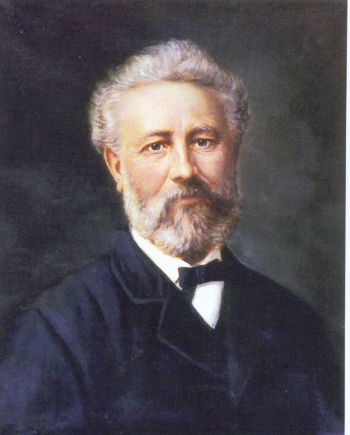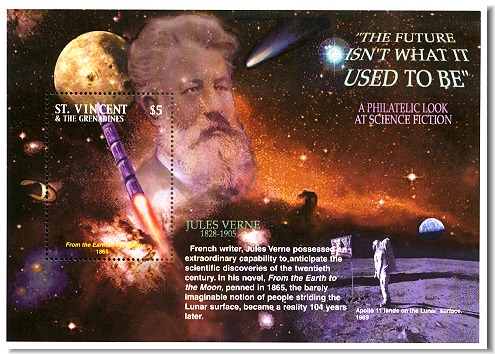Google Doodle Jules Verne 183rd birthday
(08.Feb.2011)
Today, Google celebrates the 183rd birthday of one of the most important children's author, Jules Verne, who wrote fantastic novels like Twenty Thousand Leagues Under the Sea (1870) and Around the World in Eighty Days (1873), among many others. Google is celebrating the occasion with an interactive doodle.
It's beautifully designed and it also has a little secret! It lets you navigate down 20,000 leagues under the sea. All you have to do is drag a lever with your mouse, tap your arrow keys, or - if you're viewing the Google page on an iPad, iPhone - tilt the screen.*
It's beautifully designed and it also has a little secret! It lets you navigate down 20,000 leagues under the sea. All you have to do is drag a lever with your mouse, tap your arrow keys, or - if you're viewing the Google page on an iPad, iPhone - tilt the screen.*
Jules Verne
Jules Gabriel Verne was born on February 8, 1828 in Nantes, in France. His novels (basically science-fiction) were all about his vision, as he wrote stories on space and underwater travel, even before spaceships and submarines existed. He is the pioneer of science-fiction genre.
See an interesting biographical video (French) here
Verne wrote about space, air, and underwater travel before air travel and practical submarines were invented, and before practical means of space travel had been devised.
He is best known for novels such as Twenty Thousand Leagues Under the Sea (1870), A Journey to the Center of the Earth (1864), and Around the World in Eighty Days (1873).
Verne's stories, written for adolescents as well as adults, caught the enterprising spirit of the 19th century, its uncritical fascination about scientific progress and inventions.
His works were often written in the form of a travel book, which took the readers on a voyage to the moon in From the Earth to the Moon (1865) or to another direction as in A Journey to the Center of the Earth (1864). Many of Verne's ideas have been hailed as prophetic.
The pioneering ways of travel and exploration which he wrote so much about are now common-place for us, such as exploration of the moon, the north and south poles, and the use of hot air balloons for long-distance voyages.
In his time, Verne was a true inventor and visionary; the names of his inventions and characters such as Captain Nemo, Phileas Fogg, and the submarine Nautilus have entered, and remain, a part of our popular culture.
Journey to the Center of the Earth (2008)
Among his best-known books are Twenty Thousand Leagues Under the Sea (1870) and the classical adventure story Around the World in Eighty Days (1873).
He wrote numerous short stories, essays, plays, and poems, alongside 54 extremely popular novels that only show a glimpse of the extent of his imagination.
For over 40 years Verne published at least one book per year on a wide range subjects. Verne's oeuvre include 65 novels, some twenty short stories and essays, thirty plays, some geographical works, and also opera librettos.
Verne's works have inspired a number of film makers. Some of his books have been made into movies and now into games.
He remains the most translated novelist in the world, according to UNESCO statistics.
Verne is often hailed in level with Hugo Gernsback and H. G. Wells, as the "Father of Science Fiction."
Education :
- Reading: Choose a novel with your students to read in classroom;
- Writing: Let your students explore Jules Verne's home website (English, French, Spanish, Italian) on their smartphones for an essay about the author;
- Drawing: Students could create a comic strip from a novel;
- Web: Explore the possibility to let your students build a web blog in a exchange project with a French school;
- Web 2.0: Find school partners on Facebook or Twitter;
- Multimedia:
1) Cartonize Jules Verne - the biographical essay, or the novel that your students have read, could be cartonized with Convert to Cartoon, an easy way to create cartonized versions of images and drawings (students and educator)
2) Create a video with Animoto (students and educator)
An now, see below the creative 3D video animation inspired in Jules Verne's work
G-Souto
08.02.2011
Copyright © 2010G-Souto'sBlog, gsouto-digitalteacher.blogspot.com®
References:
Centre International Jules Verne
Wikipedia/ Jules Verne
Jules Verne
via @wwwery_
* via Rosa Golijan





No comments:
Post a Comment